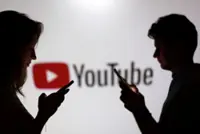The findings show that despite YouTube's rules and content moderation efforts, the platform is failing to stop the spread of frightening videos that could traumatise vulnerable children - or send them down dark roads of extremism and violence. — Photo by Leon Bublitz on Unsplash
WASHINGTON: When researchers at a nonprofit that studies social media wanted to understand the connection between YouTube videos and gun violence, they set up accounts on the platform that mimicked the behaviour of typical boys living in the US.
They simulated two nine-year-olds who both liked video games. The accounts were identical, except that one clicked on the videos recommended by YouTube, and the other ignored the platform's suggestions.





